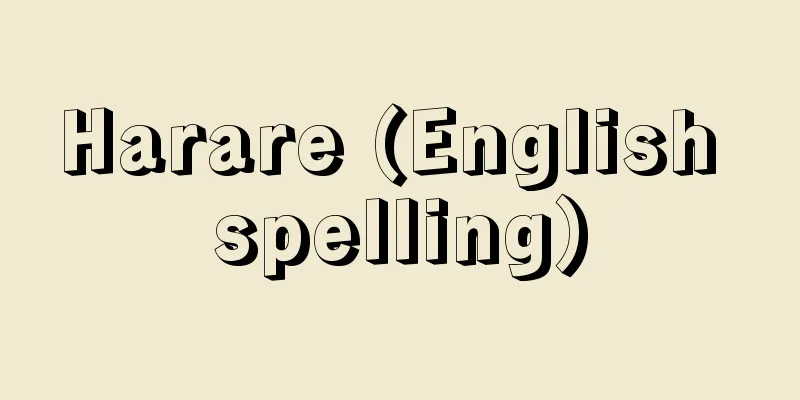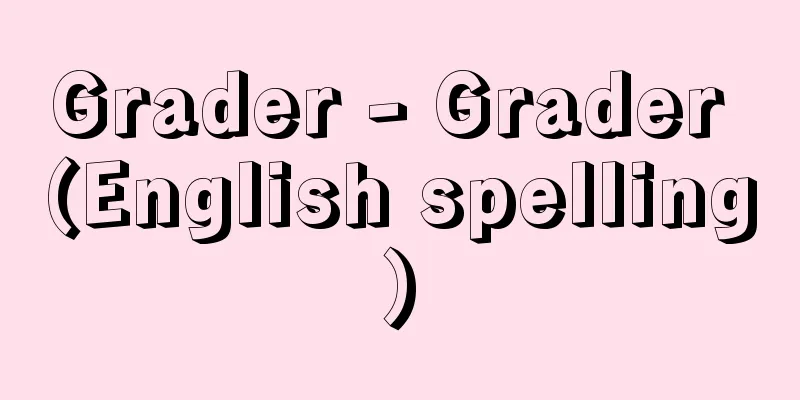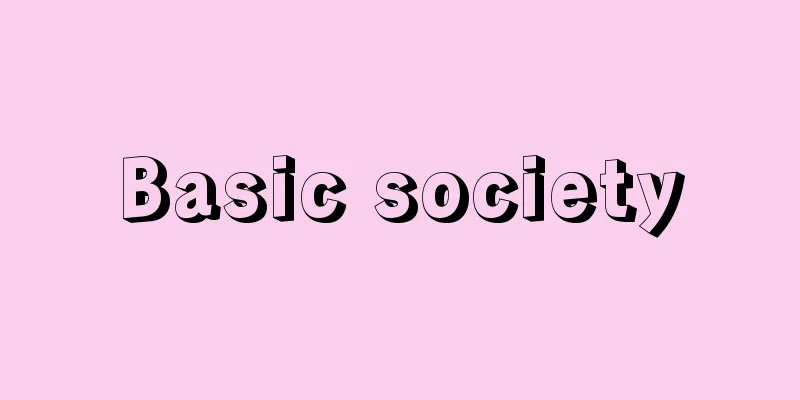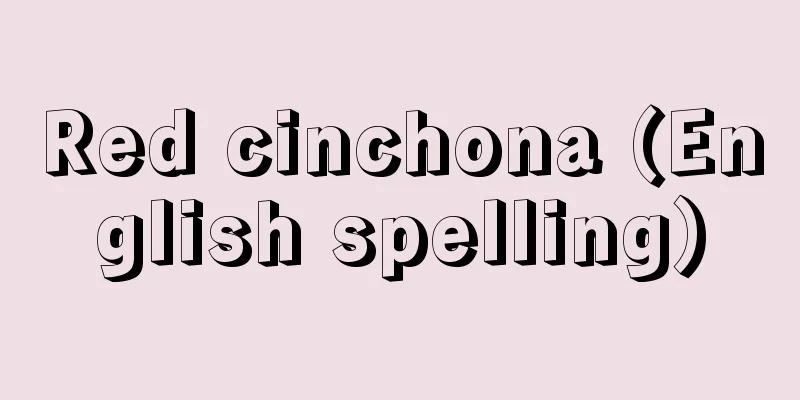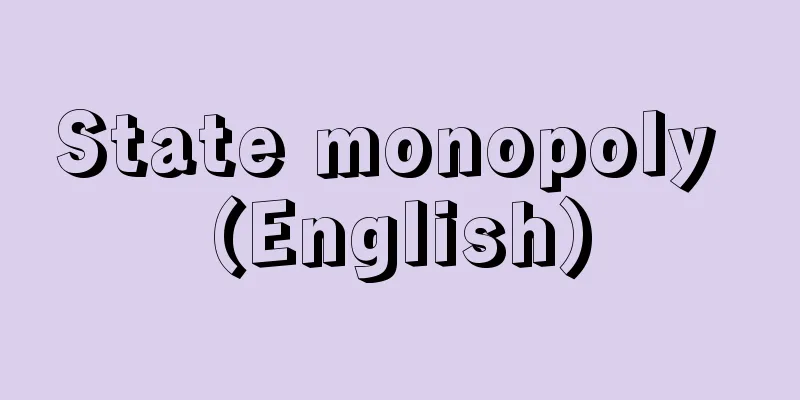Home for the aged - Roujinhome (English)
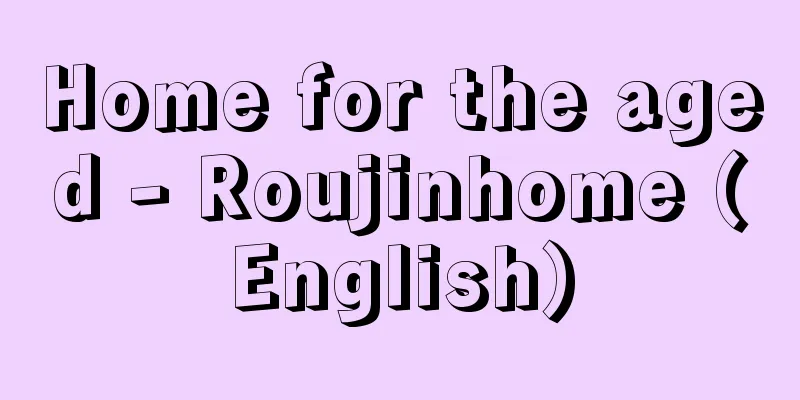
|
A general term for residential facilities, which are the main elderly welfare facilities and which accept and care for elderly people who have difficulty living at home due to physical or mental disabilities, home environment, or economic reasons. Under the Elderly Welfare Law (Law No. 133 of 1963), elderly homes are defined as nursing homes for the elderly, special nursing homes for the elderly, low-fee elderly homes, and paid elderly homes. Of these, the three facilities other than paid elderly homes, as well as elderly day service centers, short-term elderly care facilities, elderly welfare centers, and elderly care provision centers are stipulated as elderly welfare facilities. The number of elderly homes is increasing, reflecting the aging of the population and the trend toward nuclear families. As of October 2001, the total number was 7,582 (up 376, 5.2%, from the previous year). Of these, there were 4,651 special nursing homes for the elderly (188, an increase of 4.2%), 1,580 low-cost nursing homes for the elderly (136, an increase of 9.4%), 951 nursing homes for the elderly (2, an increase of 0.2%), and 400 paid nursing homes for the elderly (50, an increase of 14.3%). The total capacity was 489,403 (24,797, an increase of 5.3%). Of these, there were 67,154 low-cost nursing homes for the elderly (5,422, an increase of 8.8%), 314,192 special nursing homes for the elderly (15,280, an increase of 5.1%), 66,612 nursing homes for the elderly (117, an increase of 0.2%), and 41,445 paid nursing homes for the elderly (3,978, an increase of 10.6%). The number of nursing home residents was 464,364 (an increase of 21,572, or 4.9%), representing an occupancy rate of 94.9%. [Munekazu Nasu and Kazuhiko Yokoyama] HistoryThe unfamiliar term "nursing home" came into use in place of "nursing home" under the Elderly Welfare Law that came into effect in 1963 (Showa 38). This was to dispel the image that these facilities were known as "beggar camps" where residents were treated worse than prisoners. The term "nursing home" was first used in 1895 (Meiji 28) for St. Hilda's Nursing Home (capacity 5 people, started by 2 people in Shiba Ward, Tokyo City), which was started by Elizabeth Thorton of the Anglican Church. The origin of nursing homes can be traced back to the Tokyo Prefectural Asylum, established in 1872 as an emergency measure to maintain order and crack down on social unrest in the early Meiji period, when Japanese capitalism was in its formative years. At that time, accommodation facilities were mixed facilities for the elderly, children, the poor, homeless, etc. From the 1880s onwards, when they were established, private companies built small-scale accommodation facilities for different types of people, marking the beginning of the major private nursing homes. The first was the aforementioned St. Hilda's Nursing Home. During the establishment period, the government's stance was negative, as it was felt that providing relief to the weak would damage the good customs of mutual support among neighbors. What changed the country's attitude was the depression after World War I in 1920 (Taisho 9), which marked the beginning of a period of change, followed by the 1923 depression and the Great Kanto Earthquake in the same year. The government immediately responded to the growing number of elderly people unable to support themselves that had arisen as a result of the Great Kanto earthquake. With imperial grants and donations from the public, the Imperial Gift Foundation, Yokufukai, was established in 1925 (Taisho 14), the facility was named Yokufuen, and began housing and care in 1927 (Showa 2). Yokufuen's greatest feature was that it employed doctors and nurses as staff and began providing medical care. It was known as Yokufuen for quality and Tokyo City Orphanage (the successor to Tokyo Prefecture Orphanage) for quantity. Enlightened bureaucrats from the Ministry of Home Affairs' Social Bureau played a major role in Yokufuen. With the financial panic of 1927 adding to the problem, the government finally enacted the Relief Law of 1929 (Act No. 39 of 1929) (implemented in 1932) to replace the Relief Regulations (1874). Although nursing homes were considered exceptional relief facilities, they were finally incorporated into the system of public relief and measures. With the enactment of the old Public Assistance Law in 1946, nursing homes became protection facilities fully equipped for social welfare measures and were incorporated into the public assistance system. With the enactment of the current Public Assistance Law in 1950, nursing homes were renamed as elderly facilities and positioned as facilities for providing livelihood assistance to the elderly. [Munekazu Nasu and Kazuhiko Yokoyama] Welfare facilities measuresNursing homeNursing homes for the elderly have the longest history among elderly welfare facilities, and are a successor to the nursing homes established in the early days, the nursing homes under the Relief Law, and the nursing facilities established under the Public Assistance Law before the enactment of the Elderly Welfare Law. In other words, nursing homes for the elderly are intended to house, in principle, elderly people aged 65 or older who find it difficult to receive care at home for physical, mental, environmental, or economic reasons, and they retain a strong character as a form of poverty relief in that they impose economic requirements. The costs of these measures are covered by public funds, and fees are collected according to the users' ability to pay. [Munekazu Nasu and Kazuhiko Yokoyama] Special Nursing Home for the ElderlyUntil the Long-Term Care Insurance Act (Act No. 123 of 1997) was enacted in 1997 (effective April 1, 2000), welfare services were provided at special nursing homes for the elderly in accordance with the Elderly Welfare Act. However, after the Long-Term Care Insurance Act came into effect, in addition to the services provided under the Elderly Welfare Act, nursing care insurance services under the Long-Term Care Insurance Act also began to be provided, and these homes also came to function as nursing care facilities for the elderly. Special nursing homes for the elderly, as defined by the Elderly Welfare Law, do not impose financial restrictions as a prerequisite for admission, and are intended for elderly people who require full-time nursing care due to significant physical or mental disabilities, who find it difficult to receive such care at home, and who find it extremely difficult to enter a nursing care facility for the elderly as defined by the Long-Term Care Insurance Law for unavoidable reasons. The costs of these measures are covered by public funds, and fees are collected according to the users' ability to pay. Admission to a special nursing home under the Nursing Care Insurance Act is different from the provisional admission under the Elderly Welfare Act, and is contract admission for those who have been certified as requiring care level 1 to 5 by the nursing care certification and enter into a contract with the special nursing home. The cost is also different from that under the Elderly Welfare Act, and users are required to pay a fixed rate. [Munekazu Nasu and Kazuhiko Yokoyama] Low-cost nursing homeWhile admission to the two aforementioned facilities (admission under the Welfare for the Aged Law) is a form of accommodation measure taken by the implementing agency, admission to a low-cost nursing home is made by contract between the resident and the facility. Low-cost nursing homes are facilities that provide meals and other daily necessities for elderly people aged 60 or older, and since 1971, there have been two types, A and B. Both types A and B are for people who have difficulty living at home due to family or housing circumstances. In addition, to be admitted to a paid nursing home, the applicant must belong to a low-income bracket that cannot be admitted to a paid nursing home, and all living expenses except for administrative expenses subsidized by the government must be paid by the applicant. Type B is an apartment with a dorm mother, and in addition to the requirements for Type A, the applicant must be in good enough health to cook their own meals, and the applicant must pay part of the administrative expenses and all living expenses. Since 1989, low-cost nursing homes (care houses) have been established. The admission requirements are for people aged 60 or over who have a decline in physical function and are worried about living independently, and who are in a state where it is difficult for them to receive support from their families. [Munekazu Nasu and Kazuhiko Yokoyama] Paid nursing homePaid nursing homes are facilities that house 10 or more elderly people at all times and provide meals and other daily necessities, and are either publicly or privately run. Since they are not elderly welfare facilities, they do not receive public subsidies, and the fees are freely set by the establishment body, but there are minimum necessary regulations in place to promote the welfare of the elderly. [Munekazu Nasu and Kazuhiko Yokoyama] Home welfare measuresIn order to reduce the burden of daily care on families living with elderly people who require nursing care, and to open the facilities to the community, nursing homes and special nursing homes for the elderly have been operating short-stay services since 1978. This is a program in which families who are caring for bedridden elderly people at home are able to provide care for them for a short period of time when they are unable to do so due to unavoidable reasons such as illness, childbirth, or accidents, or due to fatigue from caring for the elderly or travel. In addition, a day service program has been in operation since 1979. This program transports frail elderly people living at home to day service centers and provides services such as bathing, meals, and daily activity training, and also visits bedridden elderly people and others in their rooms using the day service centers as a base to provide services such as bathing and meals. Nursing homes, which serve as long-term hospitalization facilities for elderly people who require nursing care, are becoming welfare centers that provide various services to home-bound elderly people living in the local community. [Munekazu Nasu and Kazuhiko Yokoyama] foreign countryIn Western countries, nursing homes as we know them today were created after the 1960s, and until then they were largely dependent on private activities. In the UK, the National Aid Act of 1948 imposed an obligation on local governments to establish nursing homes, but it was not until the enactment of the Health Services and Public Health Act of 1968 and the Local Authorities Social Services Act of 1971 that they really took off. They are called residential homes, and they house elderly people who cannot live at home with assistance, but do not require constant care to be hospitalized. In Sweden, they began to house elderly people who could no longer live independently due to old age and infirmity after the enactment of the Public Aid Act in 1957. In the US, they were established after the American Welfare for the Aged Act of 1965. American nursing homes are similar to Japanese special nursing homes, and are a combination of medical care and welfare facilities. The rate of occupancy of elderly people over 65 in nursing homes is about 4%, higher than Japan's 2% (2001). [Kazuhiko Yokoyama] "Modern Nursing Home Theory" edited by Miura Fumio and Ogasawara Yuji (1981, National Social Welfare Council)" ▽ "Nursing Home White Paper" edited by the National Social Welfare Council Elderly Welfare Facility Council (1986, National Social Welfare Council)" ▽ "Nursing Home Dictionary" edited by Komuro Toyomasa et al. (1990, Chuohoki Publishing)" ▽ "Future Paid Nursing Homes - Seeking the Ideal for Users" by Kawamura Masayoshi (1994, Akebi Shobo) ▽ "Nursing Home News - The Condition of Nursing Homes in Germany and the United States" by Yoshida Fuyuko (1995, Kindai Bungeisha) ▽ "Nursing Homes with Private Rooms - Ensuring the Human Rights of the Elderly" by Ohara Kazuoki, Ogawa Masaaki and Kinugawa Tetsuo (1995, Moebunsha)" ▽ "The Fundamentals and Concepts of Nursing Care - The Structure of Nursing Homes and Lifestyle Assistance" by Ogasawara Yuji (1995, Chuohoki Publishing) ▽ "Imai Yukio, Practical Treatment Theory for Nursing Homes Aiming for Effective Treatment - To Gain the Trust of Residents and the Community, 2nd Edition (1996, Chuohoki Publishing)" ▽ "Nagakawa Ryonosuke (ed.), Tsukiya Kazuo, Takai Tokio, Takahashi Yukio, Ishibashi Noriko, Oizumi Masaru, Shirakawa Hajime, "Our Thoughts on Nursing Homes - Creating New Welfare for the Elderly" (1996, Chuohoki Publishing)" ▽ "Nishikori Yoshinobu, Resurrecting Nursing Homes - Another Treatment Theory" (1996, Hitotsubashi Publishing)" ▽ "Ogasawara Yuji, Nursing Homes as 'Places to Live' - Their Past, Present, and Tomorrow" (1999, Chuohoki Publishing)" ▽ "Matsuoka Yoko, Beyond 'Nursing Homes (Prime)' - A Report on Welfare for the Elderly in Denmark in the 21st Century" (2001, Creates Kamogawa, Kamogawa Publishing)" ▽ "New Special Nursing Homes for the Elderly - Converting to Individual Rooms and Unit Care" edited by Omori Ya and East Japan Audit Corporation (2002, Chuohoki Publishing) " "Elderly Welfare" New Edition edited by Ogasawara Yuji, Hashimoto Yasuko, and Asano Jin (2002, Yuhikaku)" [Reference items] | | | | | |Source: Shogakukan Encyclopedia Nipponica About Encyclopedia Nipponica Information | Legend |
|
身体上または精神上の障害、家庭環境上および経済上の理由などで居宅での生活が困難な老年者を入所させ、世話をする老人福祉施設の中心である入所施設の総称。老人福祉法(昭和38年法律133号)における老人ホームは、養護老人ホーム、特別養護老人ホーム、軽費老人ホームおよび有料老人ホームである。このうち有料老人ホームを除く3施設と、老人デイ・サービスセンター、老人短期入所施設、老人福祉センターおよび老人介護支給センターが、老人福祉施設として規定されている。老人ホーム数は高齢化、核家族化を反映して増加している。2001年(平成13)10月現在、総数は7582(対前年比376、5.2%増)である。うち、特別養護老人ホーム4651(188、4.2%増)、軽費老人ホーム1580(136、9.4%増)、養護老人ホーム951(2、0.2%増)、有料老人ホーム400(50、14.3%増)である。総定員は、48万9403人(2万4797人、5.3%増)である。うち、軽費老人ホーム6万7154人(5422人、8.8%増)、特別養護老人ホーム31万4192人(1万5280人、5.1%増)、養護老人ホーム6万6612人(117人、0.2%増)、有料老人ホーム4万1445人(3978人、10.6%増)である。老人ホーム在所者数は、46万4364人(2万1572人、4.9%増)で、94.9%の充足率である。 [那須宗一・横山和彦] 沿革老人ホームというこなれない用語は、1963年(昭和38)施行の老人福祉法で養老院にかわって用いられるようになった。それは囚人以下の処遇で「乞食(こじき)収容所」とよばれていたイメージを払拭(ふっしょく)するためである。養老院という用語は、1895年(明治28)に聖公会のエリザベス・ソートンが始めた聖ヒルダ養老院(定員5人。東京市芝区にて2人で発足)で用いられたのが最初である。 老人ホームの起源は、日本資本主義の生成期の明治初期における社会不安に対する緊急秩序維持、取締策としての1872年の東京府養育院である。この期の収容施設は、老人、子供、窮民、浮浪者などを対象とした混合収容施設であった。確立期の明治20年代以降となると、民間が小規模の対象ごとの分類収容施設をつくり、おもな民間養老院の草創期を迎えた。前述の聖ヒルダ養老院が最初であった。確立期における国の姿勢は、弱者救済は隣保相扶という醇風(じゅんぷう)美俗を損なうとして消極的なものであった。 この国の姿勢を変えさせたのが、変容期に入るきっかけとなった1920年(大正9)の第一次世界大戦後恐慌、1923年の二三年恐慌、それに同年の関東大震災であった。政府は、ただちに関東大震災で増加した自活不能老人対策に対応した。御下賜金と国民の義捐(ぎえん)金で、1925年(大正14)、恩賜財団浴風会を設立し、施設を浴風園と名づけ、1927年(昭和2)に収容保護を開始した。浴風園の最大の特徴は、医師、看護婦を職員とし医療保障を始めたことである。質の浴風園、量の東京市養育院(東京府養育院の後身)とよばれた。浴風園には内務省社会局の開明的官僚の役割が大きかった。1927年の金融恐慌も加わり、政府はようやく恤救(じゅっきゅう)規則(1874)にかえて1929年救護法(昭和4年法律39号)を制定(1932年施行)した。養老院は、例外的な救護施設とされたものの、ようやく公的救済、措置の体系に組み込まれた。1946年旧生活保護法の制定で養老院は保護施設として全面的に社会福祉の措置の施設となり、公的援護体系に組み込まれた。1950年現行生活保護法の制定で養老院は養老施設と名称を変え、老人の生活扶助施設として位置づけられた。 [那須宗一・横山和彦] 施設福祉対策養護老人ホーム養護老人ホームは、老人福祉施設のなかでもっとも歴史の長いもので、創設期の養老院、救護法下の養老院、老人福祉法制定前の生活保護法による養老施設の流れをくむものである。すなわち、養護老人ホームは、身体上、精神上または環境上の理由および経済的理由により居宅において養護を受けることが困難な、原則として65歳以上の老人を収容対象としており、経済的要件を設けている点に救貧的性格を色濃く残している。措置に要する費用は公費負担であり、費用の徴収は利用者の負担能力に応じて行われている。 [那須宗一・横山和彦] 特別養護老人ホーム1997年(平成9)に介護保険法(平成9年法律123号)が制定(2000年4月1日施行)されるまでは、老人福祉法による特別養護老人ホームで福祉サービスが行われていたが、介護保険法施行以降は、老人福祉法によるサービスに加えて、介護保険法による介護保険サービスも行われるようになり、介護老人福祉施設としての一面ももつことになった。 老人福祉法による特別養護老人ホームは、入所要件として経済的制限を設けず、身体上または精神上著しい欠陥があるために常時の介護を必要とし、かつ居宅においてこれを受けることが困難であり、やむをえない事由により介護保険法に規定する介護老人福祉施設に入所することが著しく困難な老人を対象としている。措置に要する費用は公費負担であり、費用の徴収は利用者の負担能力に応じて行われている。 介護保険法による特別養護老人ホームへの入所は、老人福祉法による措置入所とは異なり、要介護認定で「要介護1~要介護5」と認められた者が特別養護老人ホームと契約する契約入所となっている。費用も老人福祉法によるものとは違い、定率の利用者負担である。 [那須宗一・横山和彦] 軽費老人ホーム前述2施設への入所(老人福祉法による措置入所)が、実施機関の職権によって行われる収容の措置という形態をとるのに対して、軽費老人ホームへの入所は、入所者と施設との契約によって行われる。軽費老人ホームは、60歳以上の老人を対象として、給食その他の日常生活上必要な便宜を供与する施設で、1971年度(昭和46)からはA型、B型の種別が設けられている。A型、B型ともに家族・住宅環境上の理由により居宅において生活することが困難な者を対象としている。A型はさらに、有料老人ホームに入所できない低所得階層に属することが要件となっており、国庫補助による事務費以外の生活費の全額が利用者負担となっている。B型は寮母つきのアパートで、A型の要件に加え、自炊ができる程度の健康状態にあることが入所要件であり、事務費の一部と生活費の全額が利用者負担となっている。また1989年度(平成1)からは介護利用型の軽費老人ホーム(ケアハウス)が設けられている。これは60歳以上で身体機能の低下などが認められ、独立して生活するには不安が認められる者であって、家族による援助を受けることが困難な状態にあることが入所要件である。 [那須宗一・横山和彦] 有料老人ホーム有料老人ホームは、常時10人以上の老人を収容し、給食その他日常生活上必要な便宜の供与を目的とする施設であり、公営および民営のものがある。老人福祉施設ではないため公費補助はなく、利用料は設置主体により自由に定められているが、老人の福祉を図るため、必要最小限の規制が加えられている。 [那須宗一・横山和彦] 在宅福祉対策要介護老人と同居している家族の日常介護の負担を軽減するため、施設を地域開放する必要から、養護、特別養護老人ホームにおいて1978年度からショートステイ事業が実施されている。これは、在宅の寝たきり老人などを介護している家族が、疾病、出産、事故などやむをえない理由のほか、介護疲れや旅行などにより介護できない場合に、短期間老人ホームに保護する事業である。また1979年度からはデイ・サービス事業が実施されている。これは、在宅の虚弱老人などをデイ・サービスセンターに送迎し、入浴、給食、日常動作訓練などのサービスを提供するとともに、デイ・サービスセンターを拠点として寝たきり老人などの居室まで訪問して、入浴、給食などのサービスを提供するものである。要介護老人のための長期入院施設としての老人ホームは、地域社会に住む在宅老人に対して各種のサービスを行う福祉拠点になりつつある。 [那須宗一・横山和彦] 外国欧米諸国においても今日の感覚による老人ホームが生まれたのは1960年代以降のことであり、それまでは民間活動に大きく依存していた。イギリスでは、1948年の国家扶助法により地方自治体に設置義務が課せられたが、本格化したのは、1968年の保健サービス・公衆衛生法と1971年の地方当局社会サービス法の施行以降である。レジデンシャル・ホームResidential Homeといい、在宅では援助を受けても生活できないが、入院するほど常時の看護を必要としない老人を収容する。スウェーデンでは1957年、救貧法にかわって公的扶助法が施行されてからで、老弱のため独立生計の営めなくなった老人を収容するところとなった。アメリカでは1965年制定のアメリカ老人福祉法以後のことである。アメリカのナーシング・ホームnursing homeは日本の特別養護老人ホームと似ており、医療と福祉の混合施設である。65歳以上の高齢者の老人ホームへの入居率は4%程度で、日本の2%(2001)よりも高い。 [横山和彦] 『三浦文夫・小笠原祐次編著『現代老人ホーム論』(1981・全国社会福祉協議会)』▽『全国社会福祉協議会老人福祉施設協議会編『老人ホーム白書』(1986・全国社会福祉協議会)』▽『小室豊允ほか編『老人ホームことば事典』(1990・中央法規出版)』▽『川村匡由著『これからの有料老人ホーム――利用者のためのあるべき姿を求めて』(1994・あけび書房)』▽『吉田冬子著『ナーシングホーム便り――ドイツ、アメリカの老人ホーム事情』(1995・近代文芸社)』▽『大原一興・小川政亮・衣川哲夫著『個室のある老人ホーム――高齢者の人権確保のために』(1995・萌文社)』▽『小笠原祐次著『介護の基本と考え方――老人ホームのしくみと生活援助』(1995・中央法規出版)』▽『今井行夫著『効果的な処遇をめざす老人ホームの実践的処遇論――入居者と地域から信頼されるために』第2版(1996・中央法規出版)』▽『永和良之助編著、槻谷和夫・高井時男・高橋幸男・石橋典子・大泉勝・白川元著『私たちが考える老人ホーム――新たな老人福祉の創造』(1996・中央法規出版)』▽『錦織義宣著『よみがえる老人ホーム――もう一つの処遇論』(1996・一橋出版)』▽『小笠原祐次著『「生活の場」としての老人ホーム――その過去、現在、明日』(1999・中央法規出版)』▽『松岡洋子著『「老人ホーム(プライエム)」を超えて――21世紀デンマーク高齢者福祉レポート』(2001・クリエイツかもがわ、かもがわ出版発売)』▽『大森弥・東日本監査法人編『新型特別養護老人ホーム――個室化・ユニットケアへの転換』(2002・中央法規出版)』▽『小笠原祐次・橋本泰子・浅野仁編『高齢者福祉』新版(2002・有斐閣)』 [参照項目] | | | | | |出典 小学館 日本大百科全書(ニッポニカ)日本大百科全書(ニッポニカ)について 情報 | 凡例 |
>>: Health Care System for the Elderly - Roujinhokenseido
Recommend
Shuyodan - Shuyodan
It was an educational organization founded in 1906...
Plebiscite (English spelling)
A referendum is a vote held by a nation to questio...
"Iroha Newspaper" - Iroha Newspaper
...He then attracted attention with his work Agur...
Poe, Edgar Allan
Born January 19, 1809 in Boston [Died] October 7, ...
Optical flat
It is made of a transparent glass plate, one side ...
Earthenware - Doki
A vessel made by shaping and firing clay bound wi...
Perfect Quadrilateral - Perfect Quadrilateral
A figure consisting of four points A, B, C, and D...
loi d'ordre public (English spelling)
...In addition, unless there is an international ...
Satellite surveying - satellite surveying
...Widely used for detailed surveying to create l...
Secret Records of Mountain Astronomers - Sanso Hiroku
This book on mining was originally written by Sato...
Semiophorus vexillarius
…The plumage of these birds is generally camoufla...
Functional capitalist - Yesterday's capitalist
…This is still the case today for small and mediu...
Karakoromo Kisshu
A kyoka poet of the late Edo period. His real nam...
Yellow-browed penguin - Yellow-browed penguin
The remaining nine species live in cold waters, m...
Alaungpaya Dynasty - Alaungpaya Dynasty
Please see the Konbaung Dynasty page. Source: Enc...

